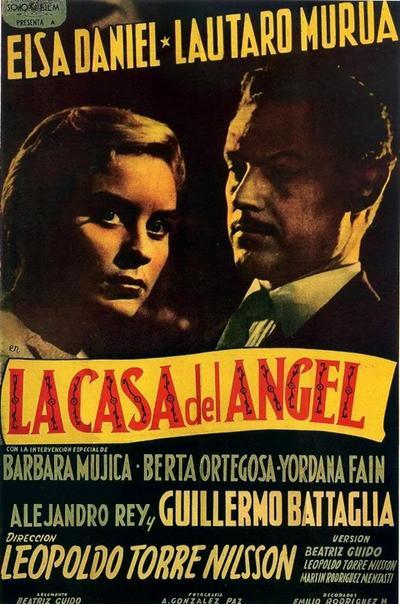![]()
![29f7c043f76a2bde437fd0d52a185152]()
Quote:
“Cautiva” features a solid performance by 23-year-old Barbara Lombardo that goes a long way in making up for the telenovela script.
Lombardo, who had small role in “The Motorcycle Diaries,” is amazingly believable as Cristina, a teenager who discovers that the man and woman who raised her are not her real parents.
Cristina’s biological parents were among the 30,000 Argentines who “disappeared” under the military dictatorship that ruled the country in the 1970s. She was born in prison on the day Argentina won the World Cup in 1978.
Years later, she is whisked out of her Catholic high school under a court order and sent to live with her biological grandmother.
At first defiant and refusing to believe the truth, Cristina – with the help of another high school girl whose parents are among the “disappeared” – comes to realize that her adoptive parents aren’t all they seem.
“Cautiva” is the feature debut of director/writer/producer Gaston Biraben, who was born in Argentina and moved to the United States after graduating from film school. (He worked on such Hollywood offerings as “I Know What You Did Last Summer” and “My Cousin Vinny.”)
The initial suspense of “Cautiva” gives way to sentimental clichés, but Lombardo’s performance (including a daring nude scene) keeps us watching.
Quote:
Here’s a dilemma that would throw the “High School Musical” crowd into a panic: Imagine going to school one day and being told you’re not who you think you are. That you’re adopted; that your real mother and father were kidnapped by the government and probably died in a ditch. That you have a new family who want you home, starting now.
This isn’t just the plot of “Captive,” the 2003 Argentine film opening at the MFA today, but the true story behind the film, repeated many times. Of the 9,000 students, workers, and activists who “disappeared” at the hands of the country’s military junta from 1976 to 1983 , many left behind infants and children who were brought up by families faithful to the regime. Nearly 80 have been reunited with their rightful relatives; no one knows how many others exist.
Two decades ago, the Oscar-winning “The Official Story” (1985) dealt with this subject from the point of view of an adoptive mother suspicious of where her new baby came from. “Captive” could be that grown child’s version of the tale. At 15, Cristina (Barbara Lombardo ) is a placid, pretty Catholic schoolgirl with an inner life we only catch in glimpses. She drifts through adolescence, unlike her classmate Angelica (Mercedes Funes ), who rails against the hypocrisy of their history teachers in smoothing over the details of that long-ago “Dirty War.”
Cristina is summoned from class to a judge’s office, accompanied by a nun, a lawyer, and a psychologist: It’s family restitution by state fiat. She’s told she is actually Sofia Lombardi, and that her mother gave birth in prison before vanishing from sight. The DNA is there to prove it; so is a grandmother (Susana Campos ) brought to tears by the sight of her daughter’s features in a strange girl’s face.
Cristina ‘s first response is terror, of course. Her loving adoptive parents, a former federal cop (Osvaldo Santoro) and his wife (Silvia Bayle ), fume at the government’s effrontery before letting dribs and drabs of ugly truth squeak out. Her new family has every legal and emotional right to Cristina/Sofia, but what are her rights? To whom does she owe allegiance? The answer is obvious but not to her; the drama of “Captive” is in how the girl’s directionless anger gains focus and compassion as she learns more about her parents’ fate.
Part detective story, part coming of political age saga, and all teenage identity crisis, “Captive” is the first film written and directed by Gaston Biraben , who has worked steadily as a Hollywood sound editor since the early ’90s. That professionalism shows in the polished filmmaking as well as an occasional tendency toward shallower melodrama than the situation deserves. The movie’s unusually even-handed and it avoids polemic, but while Lombardo gives a performance of quietly gathering strength, her character may be too much the blank template for “Captive” to fully hit home.
Tellingly, the film’s most powerful and unsettling scene is someone else’s memory of Sofia’s birth. Only after hearing it, we realize, can the girl begin her life. Unfortunately, the film’s almost over by then.
![]()
![]()
![]()
![]()
http://nitroflare.com/view/0D2356A237CA716/Cautiva_Rip_mentecato.avi
http://nitroflare.com/view/8564459DCCF9CAD/Cautiva_%28English_Subs%29.srt
Language(s):Spanish
Subtitles:English





































































































































